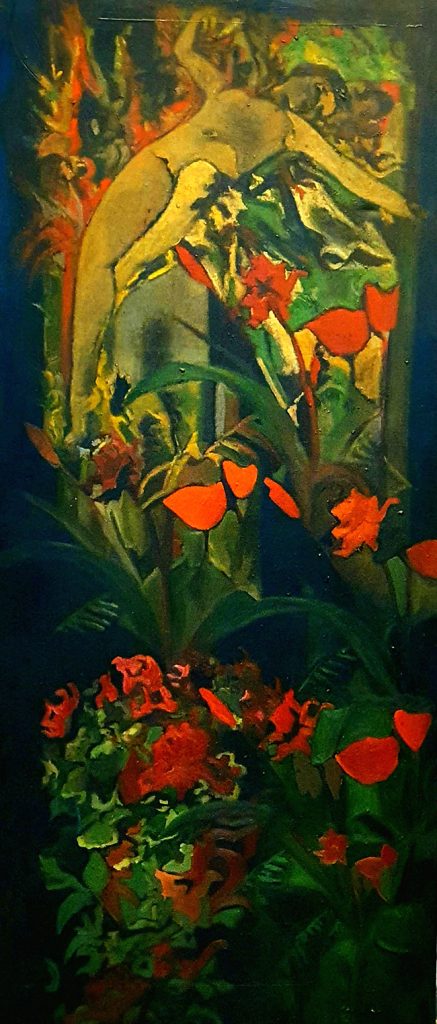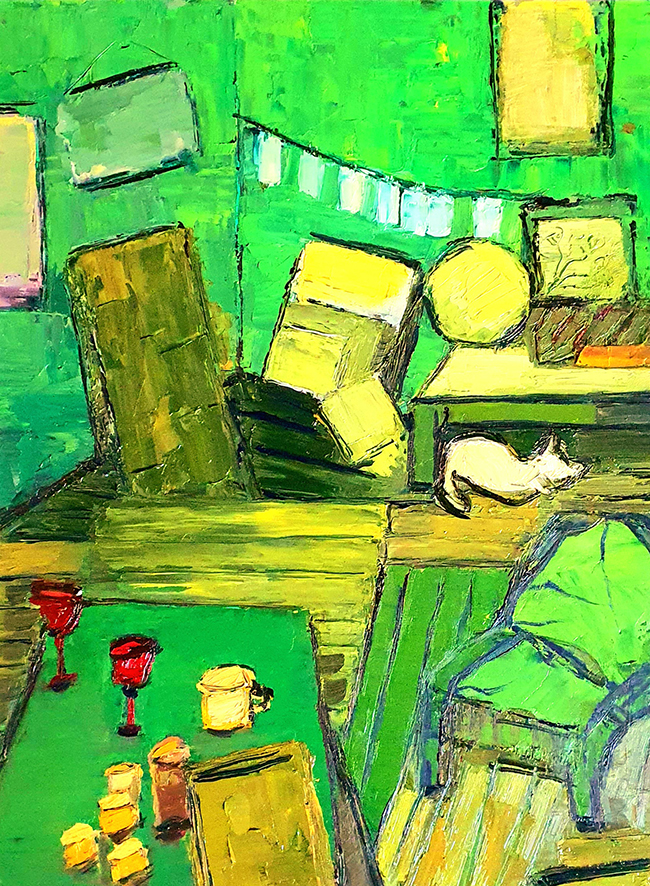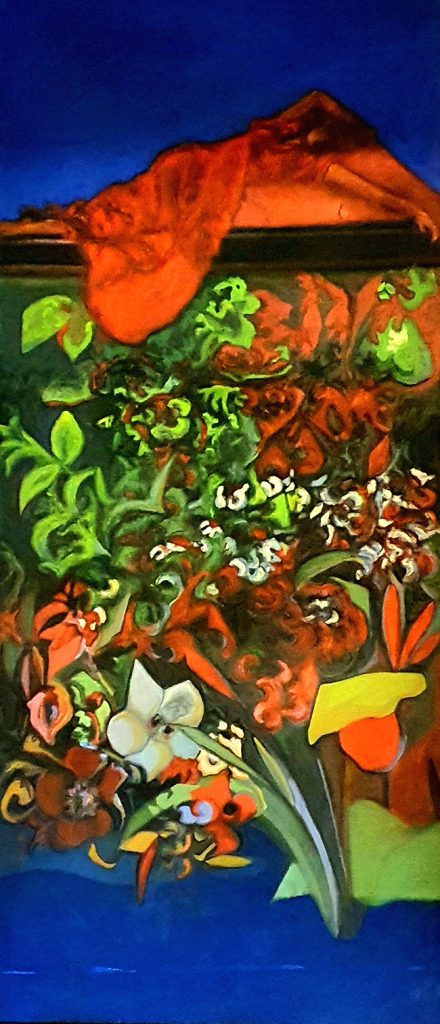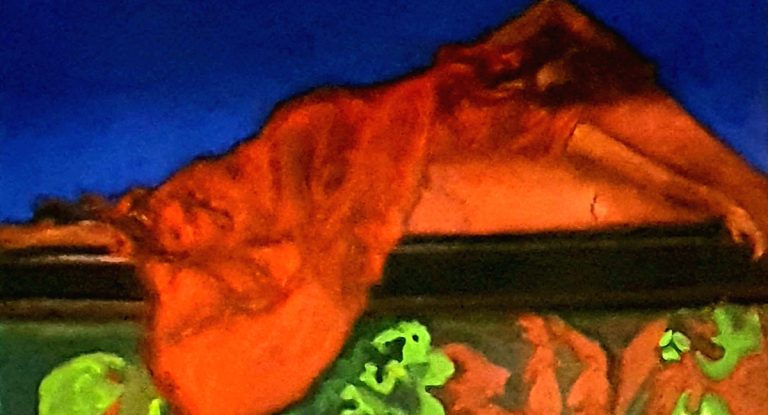Katerina Tsitsela doesn’t paint what she sees. She paints what she senses—those shifts in mood, memory, and presence that live just under the skin. Working out of Greece, her art straddles the line between painting and engraving, but her focus is always internal. She’s less concerned with depicting landscapes as they appear and more drawn to what they trigger in the mind. As she puts it, her work explores “internal landscapes,” where color and shape give form to emotion and perception.

Her work isn’t meant to be read in a straight line. There are no clear stories. No linear messages. Instead, Tsitsela’s canvases act more like emotional weather—changing, unsettled, and felt long before they’re understood. She paints the liminal spaces between thought and instinct, between what we show and what we carry. And she does so without flinching.
One of her 2024 oil paintings introduces a nude female figure pressed into a rush of blooming flowers. There’s no title, which fits—this isn’t a scene you explain. It’s one you meet. The figure doesn’t stand in front of the flowers, she seems caught within them. Her body and the petals are bound by the same sweeping strokes, built from the same raw energy. This isn’t botanical illustration—it’s something more primal. The flowers push forward like a force of nature, surrounding her but not silencing her. What’s left is a kind of exposed presence. Alive. Unfiltered.

Rather than shy away from intensity, Tsitsela charges toward it. The contrast between body and bloom doesn’t soften the piece—it gives it teeth. There’s sensuality here, but also tension. The painting hums with a kind of unresolved urgency. No narrative, no background. Just form, feeling, and the edge between the two.

A second untitled piece from the same year is quieter but cuts just as deep. Again, a lone nude figure is at the center. But this time there’s no garden—no context at all. Just a body suspended in space, rendered in dense, emotive color. Her posture is heavy with silence. She doesn’t gesture or perform. She simply stands. Not frozen, not theatrical—just open.
This is Tsitsela working in her most distilled mode. Stripping away anything extra, she leaves only the essentials: line, color, and emotional weight. The painting doesn’t push. It waits. And that patience becomes the power. It leaves room to feel whatever the viewer brings to it—grief, stillness, recognition. You don’t watch this figure; you sit with her.
The third work, also from 2024, shifts the focus from body to space. It shows her studio, done in oils on paper. It’s not an exact depiction. Think less blueprint, more atmosphere. The walls, the objects, the room itself—all rendered in shades of green that seem to vibrate with memory. The green isn’t peaceful. It’s layered, sometimes moody, sometimes almost electric.
Tsitsela isn’t painting a room so much as what it holds: solitude, time, thought. It’s a place of making, but also of being. You can feel the presence of the artist in it, even if she’s not shown. The space becomes psychological—an interior landscape, not just for her, but for the viewer too. It’s familiar in a way that has nothing to do with furniture or layout. It’s the feeling of being alone with your thoughts, surrounded by your own unfinished work.
All three pieces resist closure. They don’t tidy themselves into neat meanings. They stay open. And that’s the point. Tsitsela doesn’t aim to answer questions. She paints so we can sit with them. Her work is about staying with discomfort, with desire, with sorrow and quiet and longing. She gives those feelings a place to live, a form to take.
She avoids titles for a reason. To name these paintings would be to limit them. Instead, they remain floating, untethered—free to meet each viewer differently. What matters isn’t what they mean, but how they move you.
Katerina Tsitsela isn’t chasing perfection. She’s reaching for what we often avoid—the unseen weight of being human. And she gives it color, space, and shape. Her paintings don’t tell us what to feel. They just remind us to feel at all.

